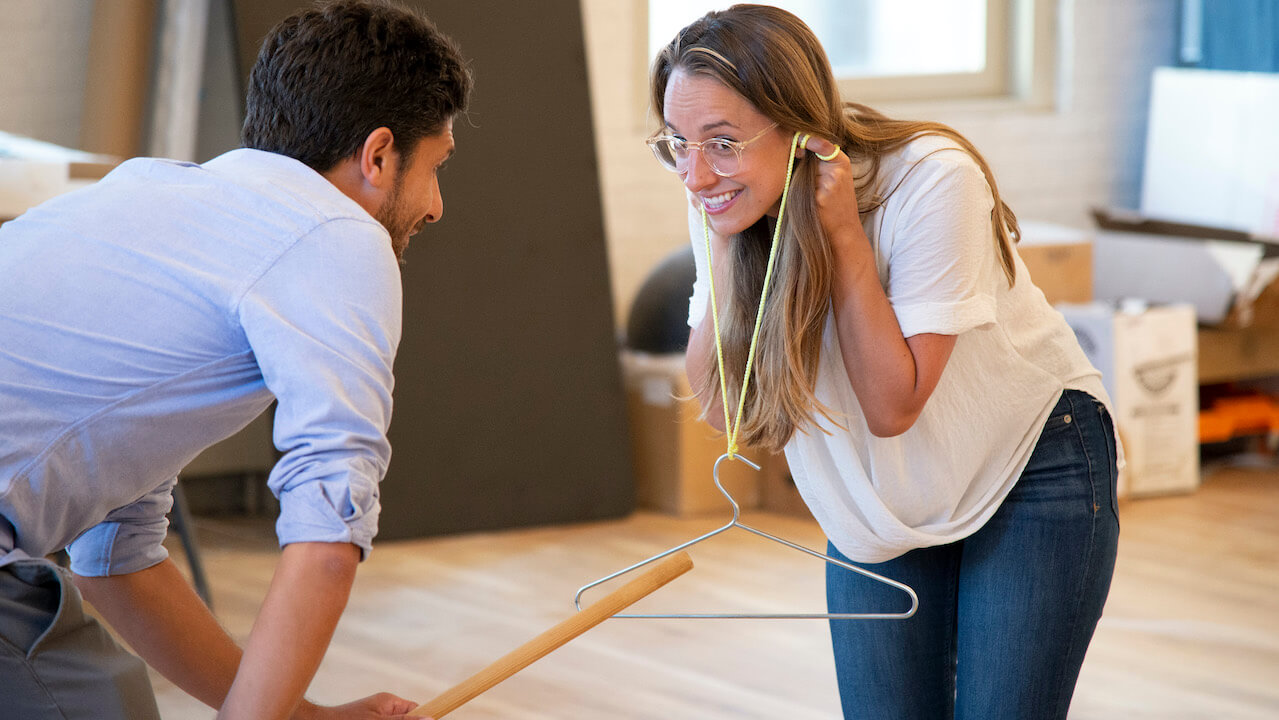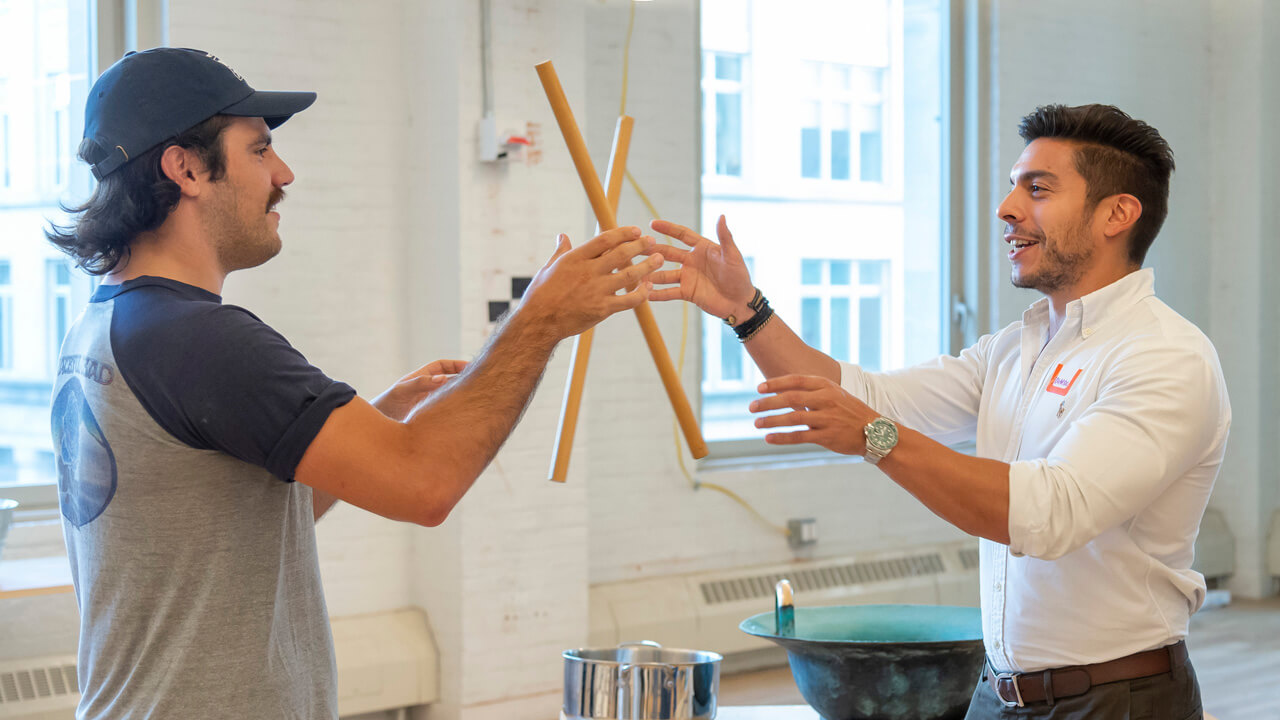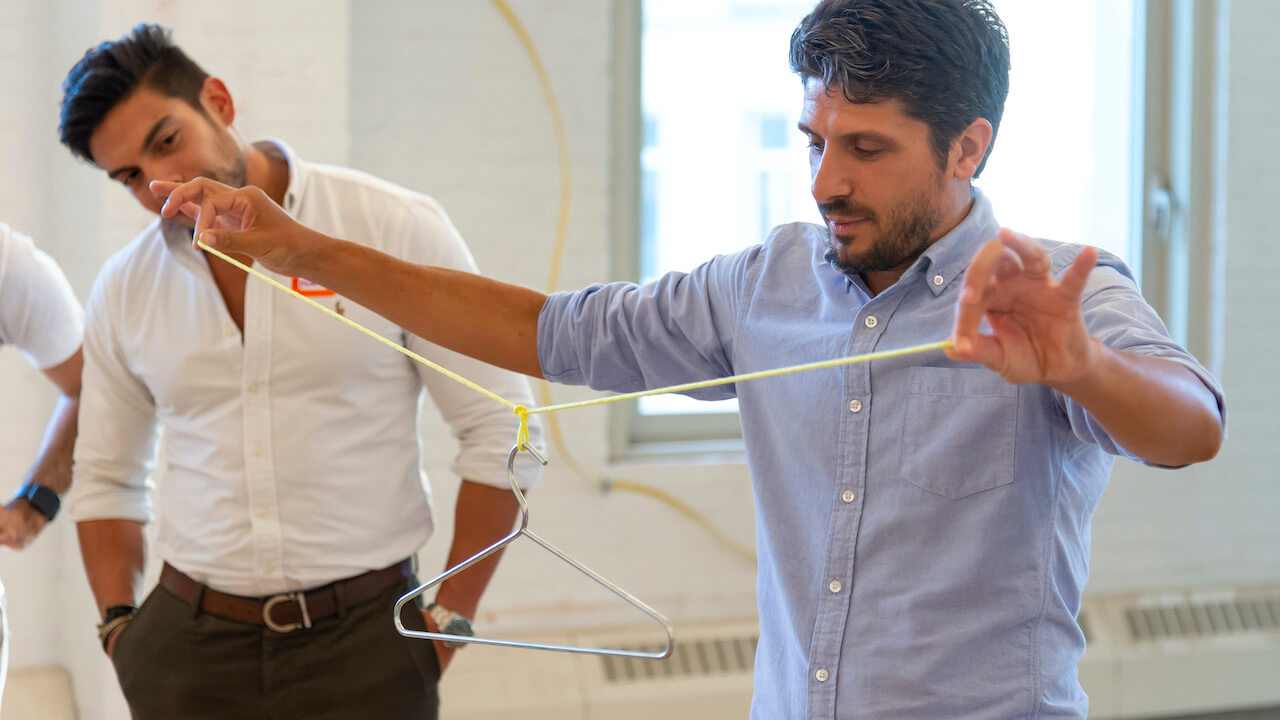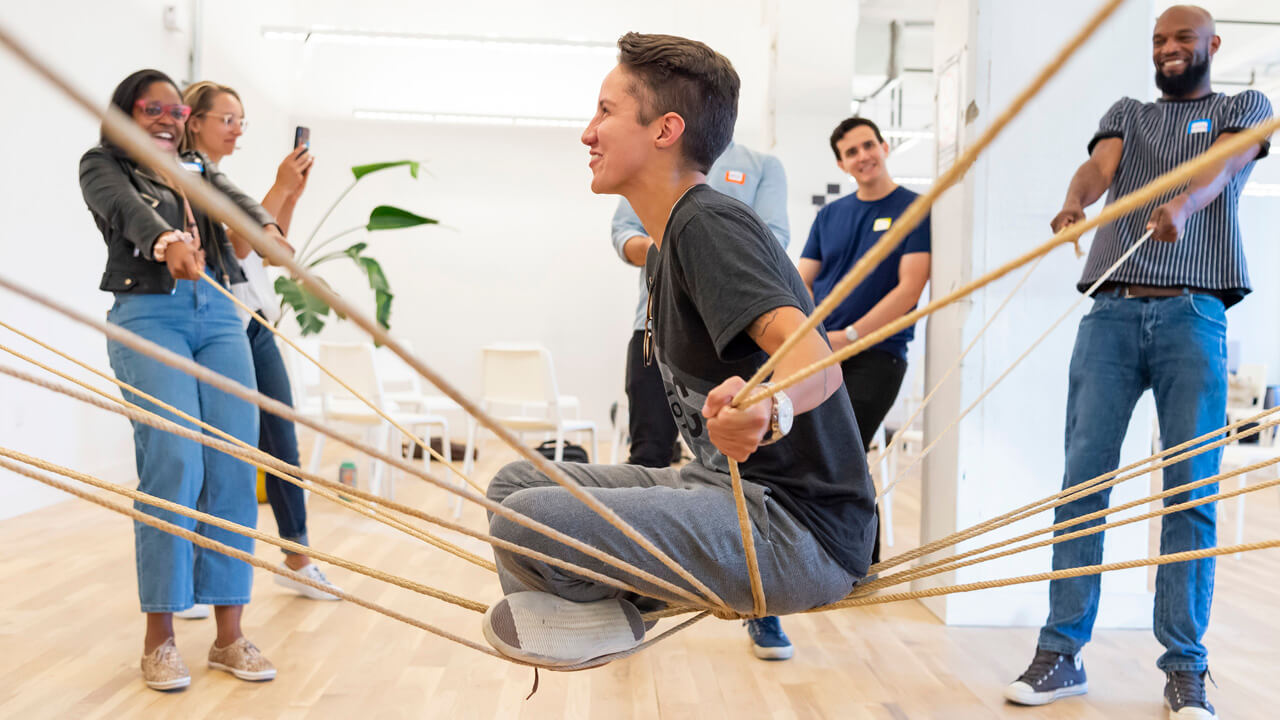Why Body Language is Important
in the Workplace?
“I’ve learned that in 60 seconds of observing my colleagues’ body language, I can learn more about how they operate compared to working with them over email for 60 days.”
How Can I Improve My Body Language Skills?
Imagine this scenario in an experiential team-building event: You’re a leader, standing face-to-face with me, one of your team members. You’re holding a mallet, and I’m holding a metal clothes hanger and a piece of string. I tie the string evenly around the top of the hanger, curl the remaining lengths of the string around my index fingers, and put my fingers in my ears. You then bang the hanger with the mallet, which emanates a dull noise, and I look up at you and smile in surprise.
If it seems like an unusual scenario, it’s meant to be. What I just described is an experiential activity designed to help you communicate better (and more effectively) with others by harnessing the language of the body, using a method called “embodied learning.”
Why Body Language is the Universal Language?
Think about it – everything you learned as a child, you learned using your body. The five senses, spatial awareness, and imagination were the tools you used to navigate your environment. As we grow up, we limit our own bodily awareness by secluding into our minds, shunning physicality in favor of verbal communication. That is where we are stunting our human potential!
When I first directly experienced embodied learning from performance artist and business management consultant Tommaso Lana who runs a company by the same name, I knew I had to write about this powerful way of learning that was already built into us. As a science communicator I was intrigued because in my professional experience, body language can be more telling than words (the days of running studies at MIT aren’t too different from managing interns at NYSCI.)
If you type “embodied learning” into Google, you’ll get ambiguous definitions because it encompasses lots of different theories, from psychology to fitness to behavioral science. Some related scientific buzzwords include “somatic intelligence” and “meditation” – which are two plausible methods of embodied learning that embrace the core idea that bringing awareness to the body can help stimulate new or underlying thought processes.
Tommaso’s approach to embodied learning is different than meditation or brain-training. It’s not a solo journey on a long path to self-discovery. It’s fun, collaborative, nimble, and immediately applicable to the workplace, and that’s why it stuck out to me. I’ve learned that in 60 seconds of observing my colleagues’ body language, I can learn more about how they operate compared to working with them over email for 60 days.
Improve Your Understanding and Interpretation of Body Language: Embody Effective Communication Skills
The first step in embodied learning is understanding this key message: Each of us has a different perspective of our inner and outer worlds, and that perspective influences our behavior. At work, we all aspire to be more inclusive and collaborative. But collaboration only works when one person understands the other and can find successful compromises, and compromise only works if every party feels included and heard.
Think back to the mallet and hanger activity I first described. The mallet gives you a position of leadership in that scenario – you control the noise as I wait for your action. Therefore, as my supervisor, it’s up to you to infer any of my non-verbal communication in the moment. Did I rush to tie the string around the hanger unevenly, or take measured steps to assure perfection? Did I signify that I heard something different than you, or did I mimic your muted response?
Without “embodying” my perspective, you probably expected that I heard the same thing as you did, when in fact, I heard an entirely different noise than you. These are unconscious expectations, and can be hazardous points of communication breakdown in the workplace when a manager is unaware of how they influence others around them.
You can learn to reset your unconscious expectations by tapping into complete self-awareness through embodied learning. Actively combining your mental intelligence with your senses allows you to learn how and why decisions are being made (is your colleague a snap-decision-maker, or a patient list-checker type?). Each of Tommaso’s workshop experiences is designed to create a somatic memory of using your body to collaborate with another person, so that team-building and self-awareness training occur simultaneously.
The Science Behind Improving Body Language
While there is no field of science dedicated to embodied learning (yet!), we can build a strong case in support of it. Numerous cross-discipline scientific studies over the years have demonstrated that non-verbal communication is equally as important as word choice. Cognitive scientists have demonstrated that the brain recognizes when verbal and non-verbal cues don’t match up. Tommaso’s work is built on these scientific concepts and is applicable in the corporate environment, the educational, and the elder care environment.
Professor Amanda Blake – an international expert in embodied learning and behavior – calls the body our “social and emotional sense organ.” The ability to use the body for social and emotional sensing is a learned skill; a skill that can be mindfully nurtured through a practice rooted in a little bit of cognitive science, a little bit of psychology, and a dash of professional development.
Through my personal experience with embodied learning, I developed a sense of self-awareness I can literally feel in my bones. It’s now easier for me to understand the root of a complex situation, own my knowledge and carve a path forward.
Exploring body language with Embodied Learning gives you the tools you need to succeed with other people in work and in life. It’s up to you to apply them to become the best leader you can be.
All Photos: Ivan Nikolov.
Originally published with the title “Your Biggest Communication Barrier at Work is Physical” on Lauren Parikhal’s blog Science Summarized, January 2020: https://www.sciencesummarized.com/blog/embodied-learning
Republished on Linkedin, January 30, 2020: https://www.linkedin.com/pulse/your-biggest-communication-barrier-work-physical-lauren-parikhal/
Republished on Medium, January 2020:
https://medium.com/@laurenparikhal/your-biggest-communication-barrier-at-work-is-physical-a432230e13e9

About the Author
Lauren Parikhal
In the era of “information overload” coupled with deliberate “misinformation,” it’s more difficult than ever to determine who’s telling the truth about science, what to pay attention to, and how any of it actually applies to your life.
Science Summarized founder Lauren Parikhal is a neuroscientist-turned-writer who believes in science’s power to influence people when communicated in a succinct and engaging way (read why she believes that is important here).
Lauren is a published journal author from her time as an MIT researcher and has worked as a PR and communications professional for global biotechnology, healthcare and pharmaceutical companies.





